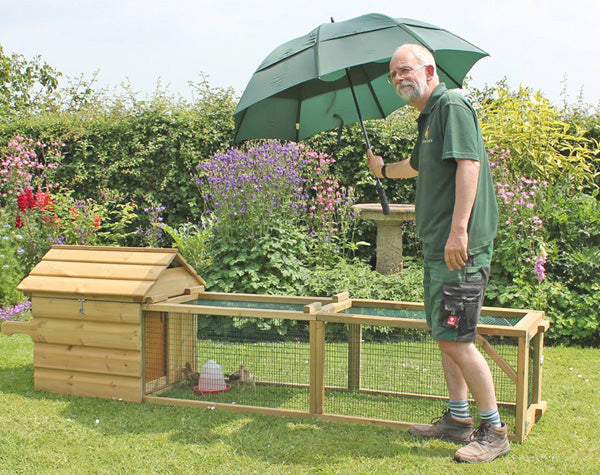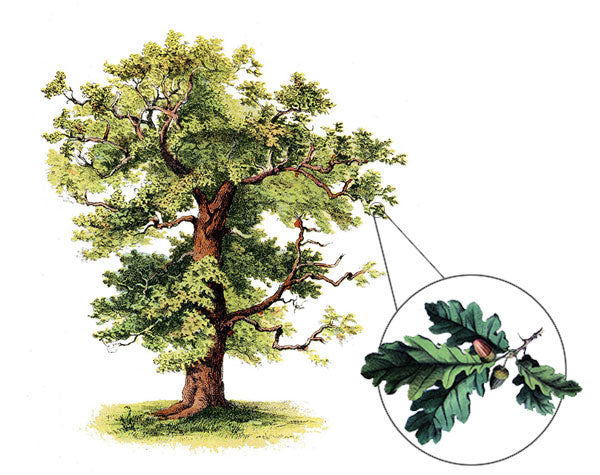Timber – a huge global industry
Wood is a wonderful, natural, and renewable material to use for building everything from matchboxes to mansions. The global timber industry is HUGE, timber for housing being one of the largest areas, and it seems even more so since the pandemic of 2020 hit the world.

The latest estimates are that the global unfinished timber market in 2022 reached $275bn (£226bn) according to BCC Market Research. The timber industry (timber is called lumber in the US) has many different sectors.
From the forests and plantations that produce it to the logging industry, to the wood processing for an enormous number of products, from making hardwood planks to softwood pulp for paper, and then there is its transportation too.
You then have hardwood and softwood sectors, paper pulp, palm oil, rubber, and fuel - timber is used in a mind-boggling array of products. Not forgetting the reclaimed timber sector and even the Christmas tree industry, the list is endless.
Which country has the most trees?
A little surprisingly, the country with the most trees is the USA at 228 billion followed by China with 140 billion, however, not surprisingly, Russia has the largest area of forest in the world. In world rankings, China exports 13% of the global wood product (panels), but Canada exports 12% of the world's lumber.

Globally, China is both the largest producer (of wood products) and the largest consumer of forest products for softwood and hardwood. Russia is its chief supplier – although there has been a shift since 2022 towards European suppliers and, latterly, towards US suppliers (published by Wood Resources International LLC).
Then - while I am throwing statistics out there – IKEA is the world's largest single timber consumer using 1% of the world’s wood annually to produce its furniture to sell across the globe. In 2017 25% of its timber was certified as sustainable and it does have a company ‘forest positive commitment’ to ensure that by 2020 it grew as many trees as it used.
How is forestry currently managed?
Today, frighteningly, across the globe, we cut down around 15 billion trees annually but only re-plant about 5 billion. It's an easy calculation, a net loss of 10 billion trees a year!
We believe it is also important that we make products that last a long time. It may be a drop in the ocean but by making products to last, we hope it reduces the number of trees needed, reduces landfill when disposed of, and reduces frequent transportation around the globe.
Illegal logging, and the corruption that goes with it, are pervasive and difficult to control. Current estimates are that it causes losses in the value of assets of $10bn annually. Due to its illegal nature, this is difficult to quantify, but the vulnerable areas in the Amazon, Russia, Central Africa and parts of Asia suffer the most.
The use of wood as a material is one of the oldest and most traditional industries in the world. Trees, which are the primary source of wood, are a renewable resource, and when managed sustainably, can provide a continuous supply of timber and other products for generations to come - United Nations Food and Agriculture Organization (FAO)
Why Timber is Pressure Treated?
This wonderful – renewable – product is so important across the globe. Wood is strong, depending on the type of timber, is easily worked with tools and is relatively inexpensive.

To read our guide on Hardwoods versus Softwoods, visit our page - What is the difference between Hardwoods and Softwoods? And for information about the difference between various Softwoods, read Redwood versus Whitewood.
Unfortunately, wood in its natural state can be attacked by wood-boring insects, fungi, and many types of bacteria. When it is in contact with the ground or standing water for long periods, bacteria and fungi attack the wood. Untreated softwood like pine or spruce will only last a year or two if sitting on moist ground.
Therefore, to prevent decay and ensure softwoods can be used outside in all weathers and situations, it is necessary to protect the wood against the natural breakdown of fibres that would happen with untreated timber. To do this softwood timber is ‘pressure-treated’.
How is timber pressure-treated (or tanalised)?
When we call timber ‘pressure-treated’, or Tanalised, we mean it has been immersed in a huge, pressurised tank of liquid preservative.

Today, in the UK and Europe, the chemical used to do this is an eco-friendly Tanalith-E preservative. This means the wood can be used, worked with, disposed of, or burnt, as any other non-treated timber.
Tanalith-E is a water-based wood preservative containing copper and organic biocides. The biocides contained in the TANALITH-E brand of wood preserver are supported under the Biocidal Products Regulation and copper protects against insects and rot.
Previously, the preserver in tanalised timber used to contain harmful compounds like arsenic, chromium, and cadmium. This toxic mix is no longer allowed in the EU thankfully so tanalised timber is safe around all creatures.
Pressure treatment is quite a precise process to ensure it is done correctly so that the pressure within the tank forces the chemical deep into the wood fibres. This treatment makes sure that the chemical reaches the core of each piece of wood. This is far more effective than simply soaking the wood in the chemical.
Treated wood (depending on type) is used for all kinds of timber frame buildings, interior framing, outdoor buildings, garden furniture, exposed exterior wood, animal housing, fencing, decking and floors.
Caring for Tanalised Timber products
When treated with Tanalith-E, timber carries a 15-year anti-fungal and anti-rot warranty. With the right care and maintenance, it can last outdoors for 30 years or more. However, if un-cared for timber is exposed to wind, rain and cold weather it will shorten its life compared to placing it in a sheltered garden. Equally, placing it in or on wet ground without a further coating will hasten its decay.

New (fresh) pressure-treated timber often has a green tinge but once outside and exposed to sunlight, this green colour weathers down to a natural honey-brown colour and then over time to silver grey. This weathering process does not mean there is any loss of preservative protection.
Timber is a natural product, therefore some types of wood can contain higher resin levels. This, if present, will show as a blue hue after treatment. This rapidly fades into the normal colour of treated timber so you will not see any difference. Image: Pressure-treated timber showing a green tinge of the Tanalith-E.
How we care for our timber at Flyte so Fancy
When the treated timber arrives in our yard here in Dorset, we put it in-stick for several weeks to reduce the moisture content before we use it to build our timber products. Any cut ends, holes or notches we make are sanded and then brushed with an end-grain preservative to keep them protected. To find out more about how we do what we do, click the link here to visit About our Stores.

Remember, timber is from a naturally grown plant and, although we work hard to make it do what we want it to do, there are occasions when it misbehaves. Over time hairline cracks can appear because the timber moves in the seasons. It dries, shrinks, gets wet, expands, and so on, all a perfectly normal and natural process. If you are concerned about any cracks, we advise you apply some PVA glue, or a flexible wood filler, and sand down afterwards.
How you can take care of your timber products
To protect pressure-treated timber, we advise applying a water-repellent coating, such as Protek Timber Eco-Shield. This is a microporous, nanotech coating made for pressure-treated timber. An annual application will provide a long-lasting waterproof coating and keeps your timber looking like new (image below, Protek Eco-Shield Clear applied to timber roof).
Any timber can, and will, swell when wet and shrink when dry. This movement is perfectly natural, it can change dimensions, sometimes by centimetres, and you will see natural hairline cracks appear over time. This does not affect the strength or longevity of the timber.

Using microporous products allows this movement, it helps to seal the timber and still allows it to breathe. Apply paints or stains to timber only when it is as dry as possible and follow the manufacturer’s instructions for use. TANALITH-E pressure-treated timber can be painted or stained as you wish but this is not strictly necessary to maintain its preservative properties. It is perfectly safe to leave treated timber outside without further protection, but we advise you consider annual maintenance for longevity.
We recommend that you allow your timber house or store to thoroughly dry outdoors for a couple of weeks after delivery and let it settle into its new home before painting. To test its moisture content try splashing some water on the surface, if it beads it’s not dry enough, if it soaks in then it is dry.
Many protective coatings are available in hardware stores, just check that your selection can be used with pressure-treated timber and/or whether it needs a primer first. We can recommend Protek Timber Eco-Shield Waterproofing Treatment which comes in several colours or clear.
In Conclusion ...
The rainforest is a complex and delicate ecosystem that provides a home to over half the world's species. We are destroying it on a scale that is hard to comprehend, but we must not lose sight of the fact that these forests are also an essential resource for millions of people around the world.We need to find ways to manage them sustainably so that they can continue to provide us with the timber and other products we need without destroying the very forests that make our planet so unique - David Attenborough
Further reading:
Knots in Timber - the Good, the Bad & the Ugly
Redwood versus Whitewood - which is the best outdoors?
Log Storage and Firewood - FAQs
© Flyte so Fancy 2023. Author: Anne Weymouth (Director, Flyte so Fancy). For more about who we are, see About Us.



